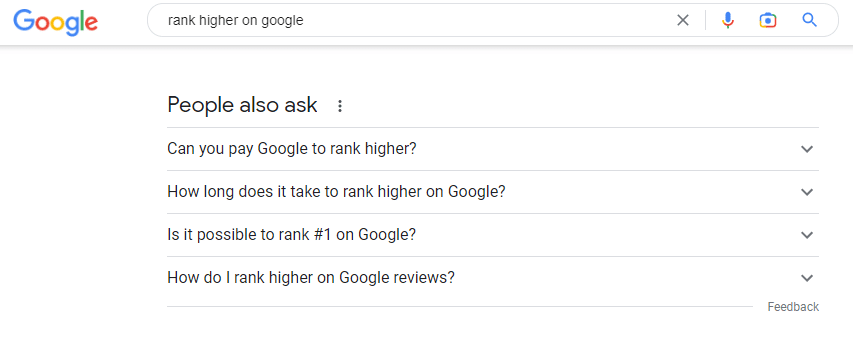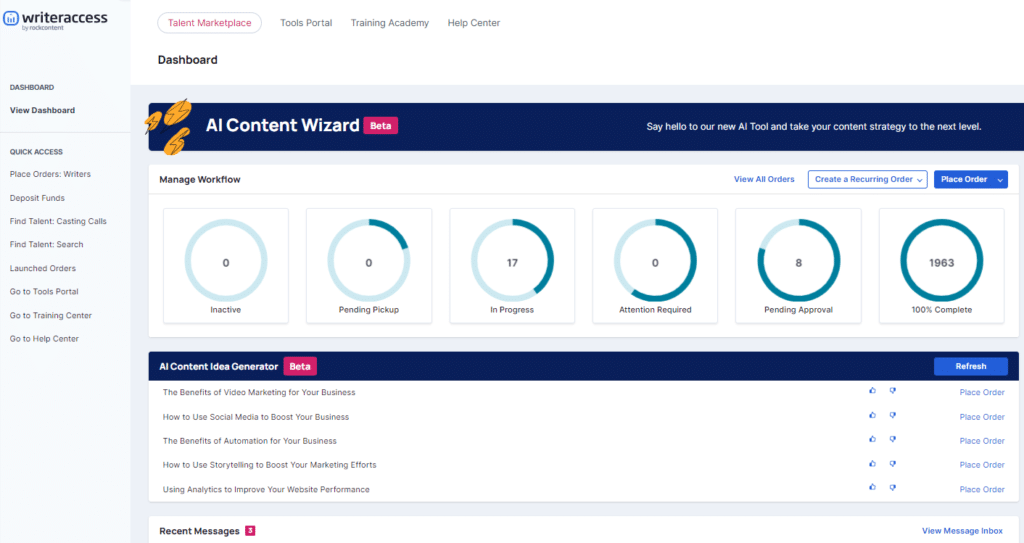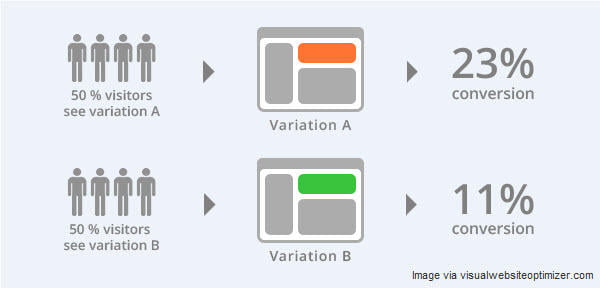When it comes to digital marketing, search engine optimization (SEO) is king.
While other methods like social media or email marketing can boost your bottom line, nothing compares to getting the top spot in search results.
Google is by far the largest search engine, handling over 8.5 billion searches in a single day. So, if you’re going to optimize your website and your content, you need to follow the leader.
Unfortunately, Google is notoriously cagey about its algorithm and how exactly it ranks the results on its front page.
That said, based on research and changes that occur after algorithm updates, it’s pretty easy to figure out what works and what doesn’t.
As a business, you need to know how to optimize Google search results to drive traffic to your website.
Fortunately, we can explain how to rank higher on Google in just seven easy steps. Let’s get started.
- Breaking Down the Importance of SEO
- How Do Beginners Learn SEO for Free?
- How to Rank Higher on Google in 5 Steps
- Get Better SEO Content With WriterAccess!
Breaking Down the Importance of SEO
You may be asking, why is SEO so vital for my brand’s success? What’s so special about optimizing for search engine results pages (SERPs)? Why should I rank higher on Google?
Here are some broad strokes that illustrate why you should invest time, energy, and money into SEO marketing.
Capture more internet traffic
While it’s hard to measure the exact percentage of clicks the top result gets on a search page, the current estimate is about a third (or 27.4 percent).
So, let’s say that a keyword gets an average of 10,000 hits per day. If you were to rank in the top position, you could expect around 2,740 visitors to your site daily.
By comparison, the fifth slot only gets around five percent of all traffic, and the bottom five results share about 3.5 percent combined.
Overall, if you’re not seeing high traffic numbers to your site, it’s likely because you’re ranking outside of the “bubble” of the top five results.
Fortunately, SEO marketing can help you rise through the ranks until you’re within reach of the top rank.
From there, you’ll notice a substantial improvement in site traffic, which can mean a stronger bottom line and more flexibility in selling products to your customers.
Understand user intent
It’s hard to believe these days, but Google used to be revolutionary when it first debuted because its goal was to get you off the site as quickly as possible.
Other search engines existed at the time, but they wanted visitors to stay on their pages, so they weren’t exactly useful in finding the right information.
So, Google succeeded and trounced the competition by focusing on adding value to a user’s search rather than trying to sell them a product or service.
Over the years, the algorithm has always stayed true to that mantra, meaning when you click a link on a search results page, you know that it will be relevant to your query.
As a result, a substantial component of search engine optimization is to produce high-value content for your audience. So when conducting keyword research, you want to focus on semantic and longtail keywords that reveal a user’s intent.
For example, instead of trying to rank for “best pizza near me,” you might focus your attention on something like, “best gluten-free pizza in Santa Monica.”
By being more specific, you can appeal to your target demographic better. This way, your conversion rate is higher than it would be for a generic search term.
Better brand awareness
Did you know that as many as 72 percent of consumers worldwide say they’re loyal to at least one company?
Customer loyalty is at an all-time high, meaning that new businesses have to establish their brands quickly and effectively to get noticed.
Fortunately, ranking high in Google search results is the fastest way to build your reputation as an authority within your niche.
The higher your spot, the more likely customers will trust your business and want to buy your products again and again.
Name recognition also helps you overcome the competition because customers will know what to expect from your business and be wary of other brands within the same industry.
Overall, SEO is essential for success in the modern world. If you don’t follow the latest optimization tactics, you’ll only fall behind and get left in the dust.
How Do Beginners Learn SEO for Free?
Fortunately, because SEO has been a digital marketing tactic for so long, there is a wealth of resources available for beginners and small companies.
Even better, you don’t have to guess what will work best – tons of trial and error have yielded some incredible insights into how the Google algorithm works.
While it’s still a closely-guarded secret, free SEO teaching tools can give you the basic foundation upon which to build a better brand.
Here are some free courses you can take to learn more about SEO and how to leverage it for your business.
- Google Search Central – If you’re trying to figure out how Google search works, you might as well gather insight from the engine itself. Search Central is a bit advanced and comes with a slight learning curve, but its information is far more valuable than what you can learn from other sites and organizations.
- SEO Blogs – There are tons of SEO-related blogs and posts you can read to bone up on the basics of this process. Sites like Moz, Backlinko, and Yoast SEO are great resources because they update their materials based on changes to the algorithm and trends within the online community. Typically, you have to be a little more proactive to find information on these blogs, but they’re worth the effort.
- SEO Training Academies – Sites like SemRush and HubSpot go a step further than providing you with information in blog posts and infographics. These websites also offer training academies where you can learn the basics and see how to apply that knowledge to your campaigns. Plus, since these academies are free, you can take the courses without investing too much time and money.
- Personal Research – If you want to know what kinds of sites are getting in the top five spots on Google search results, you can simply look them up yourself. After doing some cursory keyword research, you can look up those keywords and see what pops up. From there, you can figure out what you have to offer that the competition doesn’t and then exploit that advantage to its full potential.
How to Rank Higher on Google in 5 Steps
Before we begin, we need to mention that comprehensive search engine optimization is a long-term and time-consuming process.
Even if your site is fully optimized today, Google may make some tweaks to the algorithm tomorrow, knocking you off the top spot and into obscurity.
Fortunately, here are five steps to optimize search results and rank higher on Google:
Step one: Do your (keyword) research
Before you can optimize anything on your site, you need to know which keywords you’re optimizing for.
Otherwise, you’re grasping at straws and you may or may not see any improvement from your efforts.
Keyword research is essential because it helps you focus your attention on the searches that matter most to your bottom line.
Here are some basic tips to follow when conducting your research:
- Start Broad and Become More Niche – First, look at the search volume for generic terms and phrases. Then, look at keywords that drill down into your unique value proposition, so it’s easier to rank in the first five positions.
- Pay Attention to Volume Trends – Some keywords get more popular over time, while others drop off entirely. Pay attention to the history of a keyword to determine if it’s valuable for long-term success.
- Use the “People Also Ask” Setting – Google is fantastic at providing additional material for your keyword research. By looking at questions that users ask about your target keyword, you can understand their intent and pick secondary keywords accordingly.

Step two: Build a solid site structure
One of the fundamental components of Google search is the crawlers that the engine uses to index every page of your site.
These crawlers need to be able to index your site correctly, so you should make it easy to understand and navigate.
When trying to rank higher on Google, you have to create a reliable and relatively simple site structure.
The hierarchy of pages should be clear and understandable, and there should be a logical chain of command.
Alternatively, if your website is a hodgepodge of published and unpublished pages, broken links, and disparate content, it’s much harder for Google to index it correctly, meaning your site will languish on the bottom of the results page (or worse, on the second page).
Step three: Create valuable content
As we mentioned, Google became the number one search engine by providing value for the user.
For example, if someone is looking for flight information for an upcoming trip, Google knows that they likely want the best deal. The person may also be interested in hotel accommodation or recommendations on what to do at their final destination.
To that end, Google offers access to tons of valuable and related content.
So, to rank higher on Google, you must make sure your content is as valuable as possible. To verify its value, you have to research your target demographic and answer the question, “What are they looking to get out of this interaction?”
From there, you can build a better site that attracts your target demographic automatically.
Finally, recognize that content doesn’t just refer to blog posts. Videos, e-books, webinars, and infographics are all examples of content that can and should be optimized.
By taking a multimedia approach, it’s easier to capture audiences from different backgrounds.
Luckily, platforms like WriterAccess can help you with this endeavor. There you can find a vast base of freelancers ready to create valuable content for your brand.

Step four: Create a link network
One way that Google knows to rank a site highly is whether it has a lot of backlinks. Backlinks are links to your website from other sites online.
For example, if you own a restaurant and are listed in a blog’s “best of” roundup article.
When it comes to building a link network, you have to be proactive about soliciting backlinks from other sites and blogs.
Additionally, you have to verify that they’re legit and won’t cause any problems with the algorithm.
For example, if a site has an expired security certificate, it likely won’t show up in search results at all.
In addition to backlinks, you also have to link to both internal and external pages. The more internal links you have in your piece, the easier it is for web crawlers to index your pages.
Then, having high-quality external links helps improve your site’s reputation, since you’re willing to share links and pay the privilege forward.
Step five: Conduct A/B testing
Because SEO is an ongoing process, you never want to think, “I’m done with it.”
Instead, you have to refine your methods and message regularly to ensure it’s reaching the right audience and generating the amount of traffic you’d like.
A/B testing is the best way to adjust your SEO marketing because you can see which version gets the most hits and rises the fastest on SERPs.
Once you have the data to back it up, you can remove the second version and focus your attention on the efforts that will yield the highest return.
Step six: Improve page load speed
Nobody likes to wait for a page to load and research shows that 25% of visitors abandon a website that takes longer than 4 seconds to load, no matter its reputation.
The bounce rate increases over four times if a page takes five seconds to load, in comparison to one that loads in two seconds. A high bounce rate certainly impacts the way Google sees a page, and it certainly impacts how it ranks on the SERP.
Some practices that can improve your page load speed include reducing the amount of CSS and JavaScript files in it, and optimizing image size and format (JPEG is usually smaller and easier to load, but has also lower quality than PNG).
Another good strategy is to enable browser caching, which means that static files like images and CSS are stored in the users’ cache. As a consequence, the next time they visit your website, it will load faster because there’s no need to make a request to the server.
Step seven: Optimize your website for mobile devices
With the increasing use of smartphones and tablets, it’s crucial to ensure that your website is mobile-friendly. Americans spend over five hours a day on their mobile devices, checking their phones around 96 times.
Google considers mobile optimization as a ranking factor, so it’s essential to provide a seamless browsing experience for mobile users.
Make sure your website is responsive, loads quickly, and has a user-friendly interface on mobile devices. Also, ensure that the font size is adequate, forms are simple to fill out and input fields are mobile-friendly (use drop-down buttons and date pickers, for example).
Get Better SEO Content With WriterAccess!
SEO content isn’t just blog posts and meta descriptions. Every aspect of your site can be optimized, including the URL tag, alt-image text, and even your contact information.
Fortunately, you can generate all the SEO-based content necessary thanks to WriterAccess and rank higher on Google.
We’re offering a free trial, so you can see how easy it is to connect with a high-quality writer within your niche.
Our writers have extensive experience and diverse backgrounds, so you’re sure to find a hit, no matter what kind of content you want.
Visit us online today and see what WriterAccess can do for your SEO marketing strategy!









